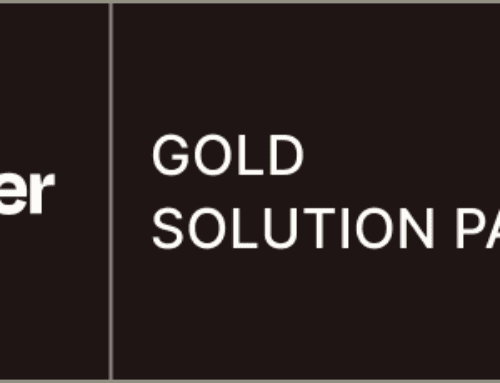How to Automatically Add Saved Tracks to Your Spotify Playlist with Make
Introduction to Automating Your Spotify Playlist
Do you ever find yourself spending countless hours curating the perfect Spotify playlist? Imagine if there was a magic wand that could automatically add your saved tracks to your playlists. Well, you’re in luck because this isn’t just a fantasy—it’s a reality thanks to a nifty automation tool called Make.
In this guide, we’ll dive deep into how you can leverage Make to streamline your Spotify experience. Whether you’re a music aficionado or just someone who loves efficiency, automating your playlist updates can save you tons of time, allowing you to focus more on enjoying the music rather than managing it.
Understanding the Basics of Make
Before we jump head-first into the steps, let’s take a moment to understand what Make is all about. Essentially, Make is an automation platform that connects various apps and services, allowing them to collaborate without you lifting a finger. Think of it as a bridge that links your digital tools together seamlessly.
The real beauty of Make lies in its ability to minimize manual tasks. It acts like a personal assistant, ready to automate processes like adding new Spotify tracks to your favorite playlist. Once you set it up, it’s essentially ‘set it and forget it’. The automation runs in the background while you carry on with life’s other adventures.
The Importance of Automating Music Playlists
Why should you even bother automating your playlists? Well, consider this: each day we’re bombarded with new music releases from all corners of the globe. Keeping tabs on these tracks, especially ones you love, can be overwhelming. Automation ensures that every track you save finds its home in your designated playlist.
Moreover, staying organized is key to keeping your music tastes fresh and exciting. With automation, your playlists are always up-to-date, capturing your musical journey without you having to intervene constantly. It’s like having a librarian who knows exactly which books you’ll love to read next, shelving them just for you.
Setting Up Your Make Account
Alright, first things first—you need a Make account. Setting up is a breeze. Head over to their website and sign up using your email or social media accounts. Once you’re in, you’ll have access to a plethora of integrations and templates.
It’s important to explore the Make dashboard, as familiarizing yourself with the interface will make the automation process smoother. Check out the templates section; here, you can find pre-existing workflows (called scenarios) that might suit your needs. But don’t worry, we’ll guide you through setting up the one specifically for Spotify.
Creating Your Spotify Automation Scenario
Now comes the fun part—creating your Spotify automation scenario. A scenario in Make is a series of steps (or modules) that your automation will execute. Think of it like a recipe, where you’ve got ingredients and instructions to follow.
Find the Spotify integration first, then select the necessary modules. You’ll want one that tracks saved songs and another that places these songs into your desired playlist. Configure each module according to your preferences, such as selecting specific playlists or tracks. Once everything is set, run the scenario to see it in action.
Troubleshooting Common Issues
Like any technology, things might not always go as planned. If your automation isn’t working, first ensure that all modules are properly linked and configured. Double-check your Spotify permissions—often, integrations require explicit permissions to work effectively.
If you’re still facing issues, the Make community forums and help sections are great resources. They offer troubleshooting tips and solutions from experienced users. Remember, tinkering with automation is a process, and with a bit of patience, you’ll have your playlists running like a well-oiled machine.
Benefits of Using Make for Spotify
By now, you might be wondering what makes Make so special compared to other automation tools. For starters, its user-friendly interface allows even non-tech-savvy individuals to create complex workflows without a coding background.
Make is also highly customizable, giving users the flexibility to tailor scenarios to their exact needs. This personalization, combined with its ability to integrate numerous apps, makes it a compelling choice for anyone looking to streamline their digital life—including managing those beloved Spotify playlists.
Conclusion: Let Your Music Flow Effortlessly
So there you have it—a pathway to transform your Spotify playlist curation from a laborious task into a seamless experience. By utilizing Make, you’ve equipped yourself with a powerful tool that harmonizes your musical world effortlessly.
With your playlists now automatically updated, you can sit back, relax, and let the rhythm take over. Dive into the sea of tunes, knowing that your favorite tracks are conveniently lined up, waiting for you to hit play.
Frequently Asked Questions
1. Is Make free to use?
Make offers both free and paid plans. The free plan comes with basic features suitable for most personal tasks, while paid plans provide advanced functionalities for professional use.
2. Can I use Make on my mobile device?
While Make doesn’t have a dedicated mobile app, its web interface is optimized for mobile browsers, allowing you to manage automations on the go.
3. Are there any limits to the number of tracks I can automate?
The number of tracks you can automate depends on your Make account plan. Free accounts may have limits, whereas paid accounts usually offer more extensive automation capabilities.
4. What if my Spotify account is private?
Make works with private Spotify accounts as long as the necessary permissions are granted during setup. Ensure that you authorize Spotify’s API access through Make to enable automation.
5. Can I customize the automated playlist name?
Absolutely! During the scenario setup, you can choose or specify the playlist you want your tracks to be added to, including existing or newly created playlists.










